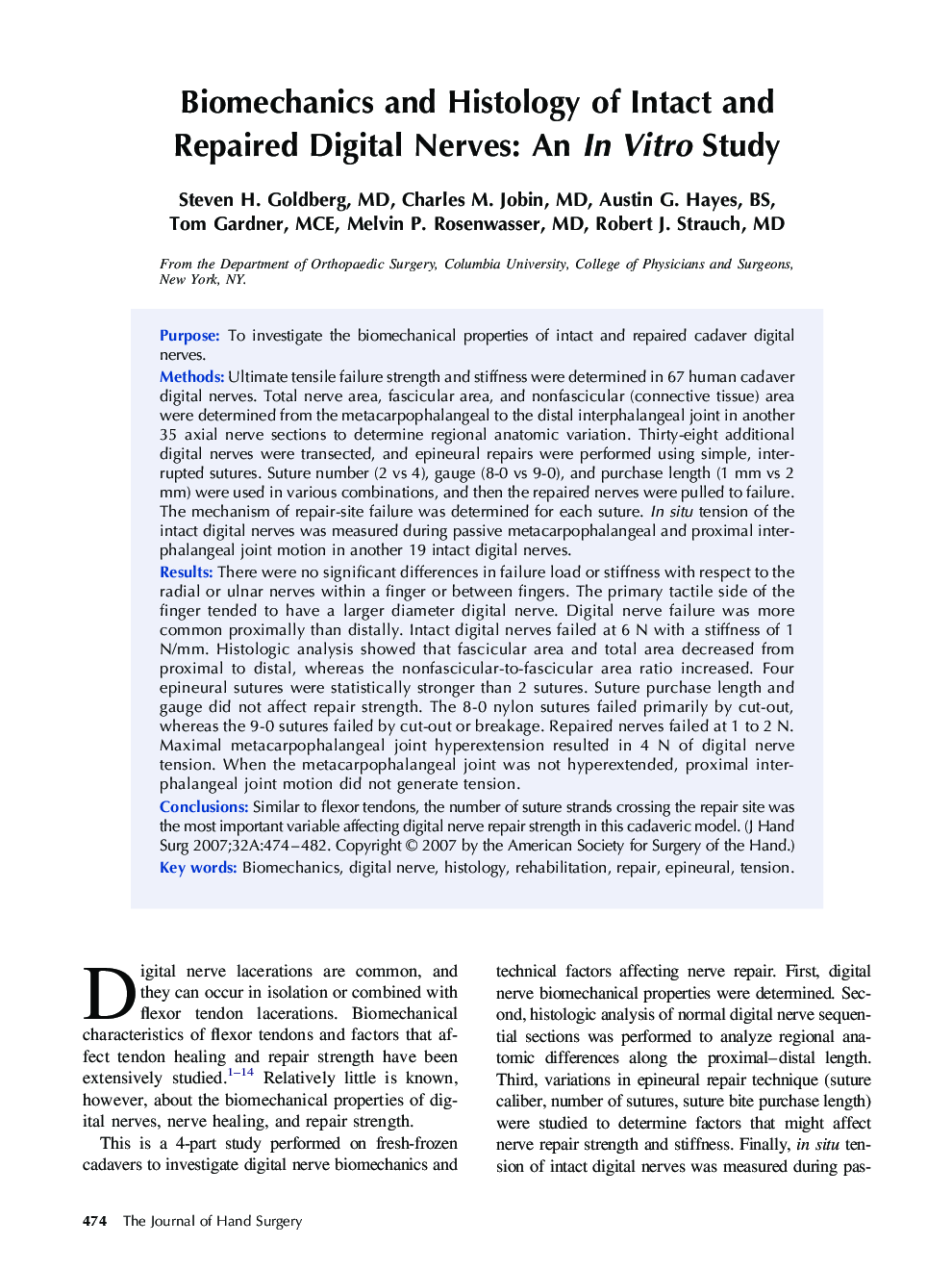| کد مقاله | کد نشریه | سال انتشار | مقاله انگلیسی | نسخه تمام متن |
|---|---|---|---|---|
| 4071524 | 1604454 | 2007 | 9 صفحه PDF | دانلود رایگان |

PurposeTo investigate the biomechanical properties of intact and repaired cadaver digital nerves.MethodsUltimate tensile failure strength and stiffness were determined in 67 human cadaver digital nerves. Total nerve area, fascicular area, and nonfascicular (connective tissue) area were determined from the metacarpophalangeal to the distal interphalangeal joint in another 35 axial nerve sections to determine regional anatomic variation. Thirty-eight additional digital nerves were transected, and epineural repairs were performed using simple, interrupted sutures. Suture number (2 vs 4), gauge (8-0 vs 9-0), and purchase length (1 mm vs 2 mm) were used in various combinations, and then the repaired nerves were pulled to failure. The mechanism of repair-site failure was determined for each suture. In situ tension of the intact digital nerves was measured during passive metacarpophalangeal and proximal interphalangeal joint motion in another 19 intact digital nerves.ResultsThere were no significant differences in failure load or stiffness with respect to the radial or ulnar nerves within a finger or between fingers. The primary tactile side of the finger tended to have a larger diameter digital nerve. Digital nerve failure was more common proximally than distally. Intact digital nerves failed at 6 N with a stiffness of 1 N/mm. Histologic analysis showed that fascicular area and total area decreased from proximal to distal, whereas the nonfascicular-to-fascicular area ratio increased. Four epineural sutures were statistically stronger than 2 sutures. Suture purchase length and gauge did not affect repair strength. The 8-0 nylon sutures failed primarily by cut-out, whereas the 9-0 sutures failed by cut-out or breakage. Repaired nerves failed at 1 to 2 N. Maximal metacarpophalangeal joint hyperextension resulted in 4 N of digital nerve tension. When the metacarpophalangeal joint was not hyperextended, proximal interphalangeal joint motion did not generate tension.ConclusionsSimilar to flexor tendons, the number of suture strands crossing the repair site was the most important variable affecting digital nerve repair strength in this cadaveric model.
Journal: The Journal of Hand Surgery - Volume 32, Issue 4, April 2007, Pages 474–482